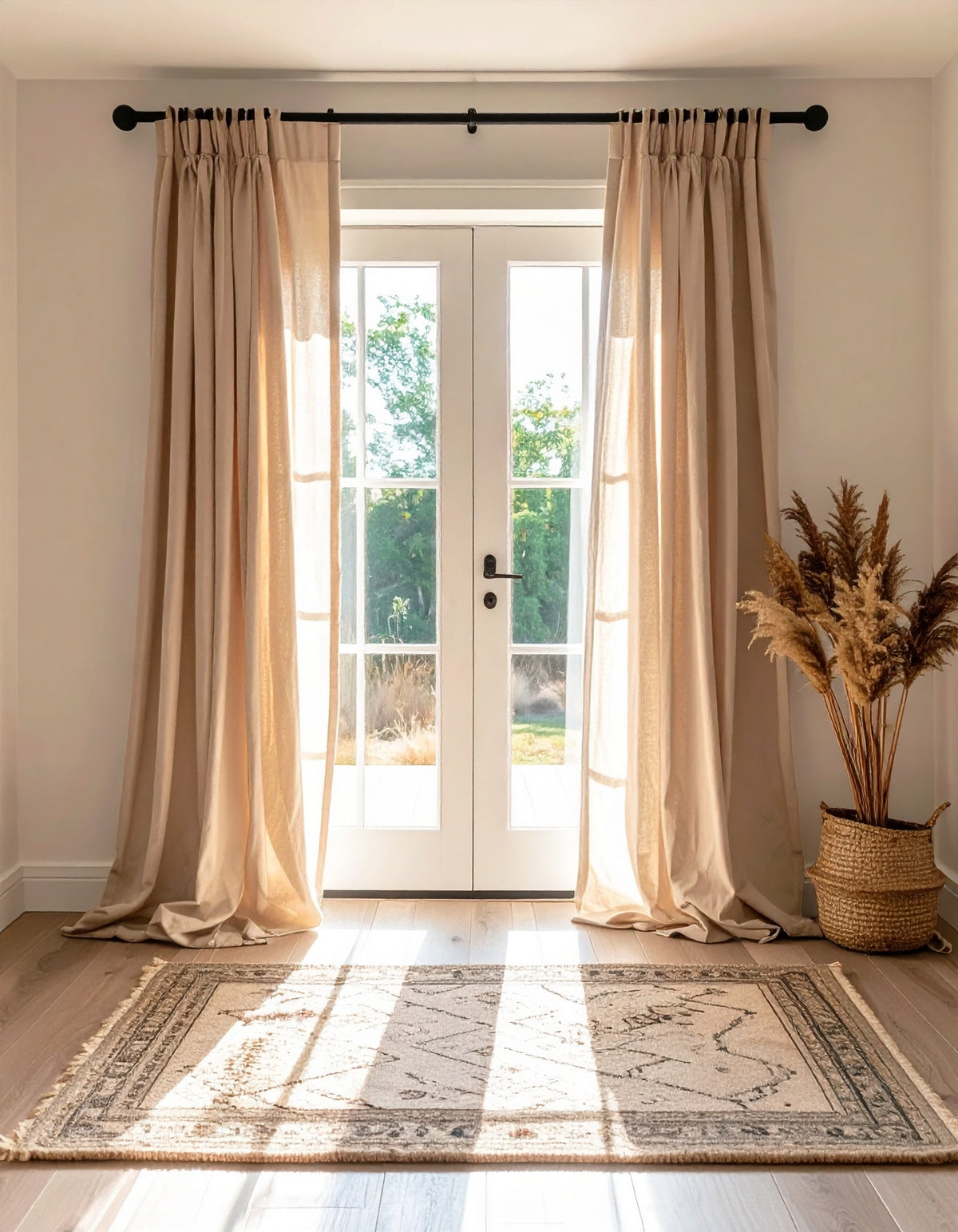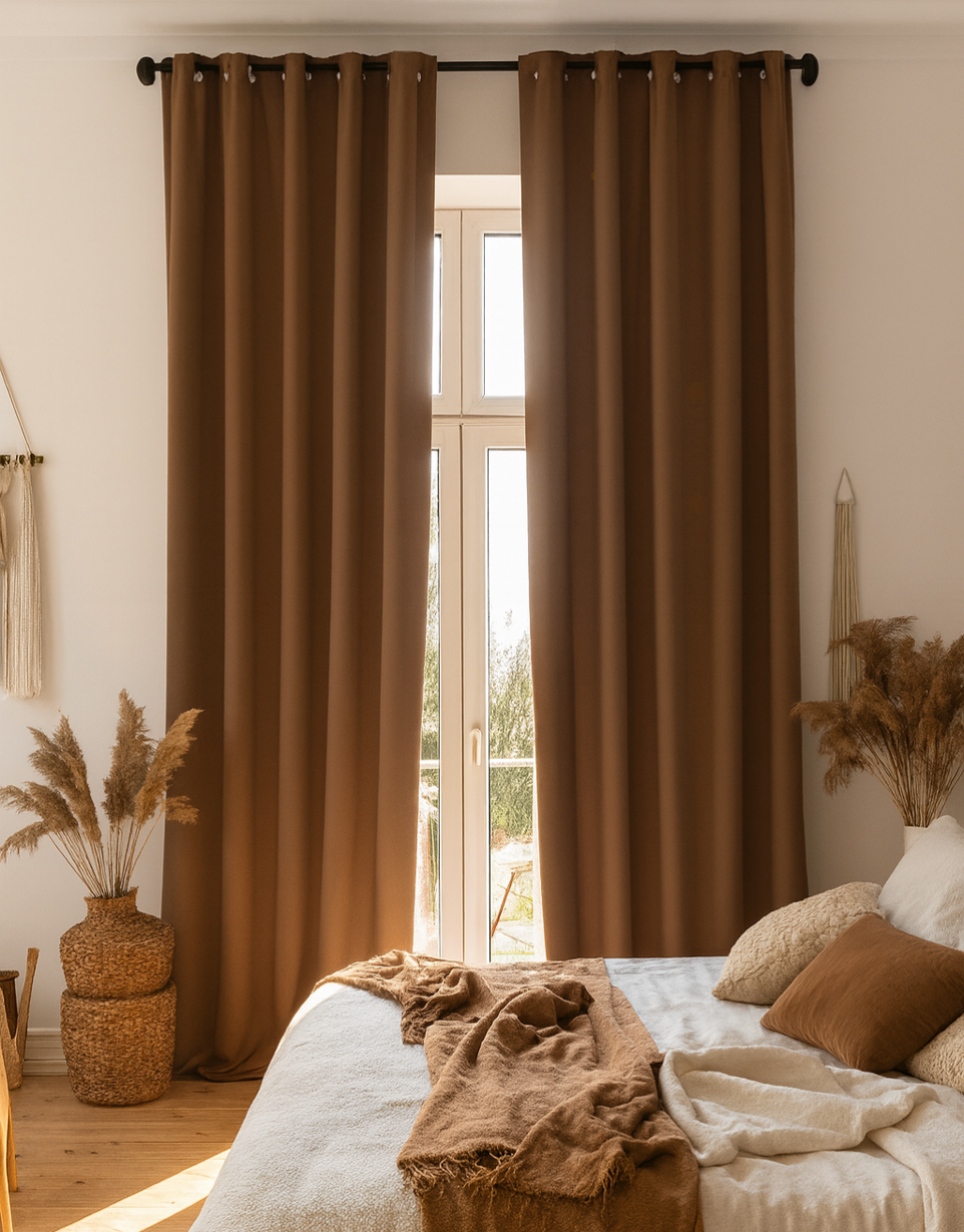The way curtains fall shapes the atmosphere of the entire room. A few extra inches can make the difference between feeling tailored and casual, polished and relaxed. Choosing the right curtain length is about practicality too. A shorter drop can feel light and functional in busy spaces, while longer curtains create a sense of softness and calm. To make the decision easier, here are the four most common curtain lengths explained, with guidance on where each one works best.
Sill-Length
Sill-length curtains end right at the window ledge. They are often chosen for kitchens, bathrooms and other smaller spaces where longer fabric would get in the way. Because they stop neatly at the sill, they won’t interfere with radiators, countertops or furniture placed directly below the window. This makes them especially practical in rooms that are used often and where ease of movement matters. If you want to frame the light without adding extra layers of fabric, sill-length curtains are a reliable and tidy choice.

Apron-Length
Apron-length curtains fall just a few inches below the window ledge, usually grazing the wall between the sill and the floor. They offer a little more presence than sill-length curtains while still keeping a space open and easy to move through. This style is particularly useful in family spaces or children’s rooms, where longer curtains may be pulled or stepped on. They’re also a practical option for home offices and dining rooms, where a clean, simple look is needed without the formality of floor-length drapery.

Floor-Length
Floor-length curtains are the most versatile and popular choice. They are designed to slightly touch the floor or hover just above it. They create a polished finish that suits both casual and more formal interiors. Because they extend the full height of the wall, they make ceilings appear taller and windows larger. Unlike puddle-length curtains, they are easy to keep clean and won’t gather dust at the base. For many homes, this style strikes the right balance between beauty and practicality. It works equally well in living rooms, bedrooms and spaces where you want a tailored look.

Puddle-Length
Puddle-length curtains are the most dramatic option. They extend several inches beyond the floor so that the fabric gathers in soft folds at the base. They bring a sense of luxury and are often chosen when the curtains are intended to be more decorative than functional. This style works best in formal spaces such as a dining room or a master bedroom, where curtains are drawn less frequently and the extra fabric won’t be disturbed by daily activity. Puddle-length curtains do require more upkeep since the fabric may collect dust or need occasional arranging to maintain its appearance.

Finding What Works for Your Space
No matter which style you choose, curtain length is one of the simplest ways to influence the character of your home. When deciding on curtain length, think first about how the room is used. In high-traffic areas or spaces where furniture sits directly beneath the window, a shorter length is usually more practical. In rooms where you want a sense of calm or a more tailored finish, floor-length curtains will give you exactly that. And if you’re drawn to softness and a touch of grandeur, puddle-length curtains will bring that layered depth to the room, provided you don’t mind the extra care they require.









2 comments
mv4vqk
mv4vqk